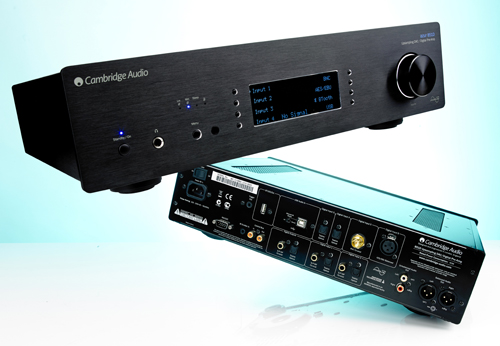What Hi-Fi? Verdict
Solid performer for the money, even if it can't scale the heights of the class leaders
Pros
- +
Impressive build
- +
Good features including aptX Bluetooth connectivity
- +
Refined, tonally balanced presentation
- +
Detail and refinement
Cons
- -
Lacks rhythmic drive and could do with more low-level dynamic expression
Why you can trust What Hi-Fi?
Cambridge may be best known for talented budget kit, but its upmarket 8-series products have shown the brand is capable of delivering at the higher end too.
The new Azur 851D digital-to-analogue converter is the latest addition to their stable.
Design
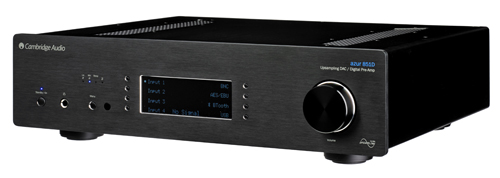
This DAC impresses the moment we unpack it. It’s big – built into one of the company’s beautifully finished full-size 8-series cases – and features a large, clear display and an extensive range of features.
We even like the remote; it’s good quality and easy to use, bar some cramped buttons.
It’s inability to play DSD aside, the 851D ticks all the boxes. It will play 24-bit/192kHz files from all inputs, including (unusually) optical.
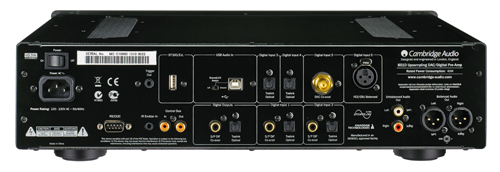
Inputs are what we’d expect: coax, optical and USB, with the addition of AES/EBU and, more usefully, Bluetooth via a supplied dongle.
The addition of aptX Bluetooth opens up the DAC for use with smartphones, tablets and computers.
We’re pleased to see a headphone output and that the 851D can be configured as a digital preamp, with a variable output that can be connected directly into a power amp or active speakers.
This is a great idea if you only have digital sources and want an arguably more audiophile set-up with a simpler signal path. Analogue outputs are in both single-ended and balanced XLR.
Performance
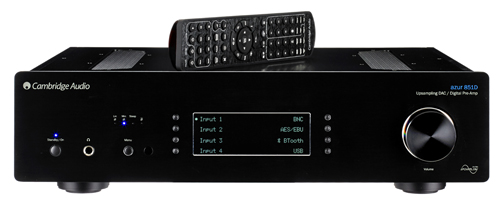
Initial listening impressions are good – the 851D delivers a nicely balanced sound with even tonality and detail.
Play Orff’s Carmina Burana (CD rip) and the Cambridge shines with an agile sound, lacking nothing in scale or authority. Instruments are rendered with precision and delivered with suitable solidity.
We’re impressed by the large-scale dynamics and the DAC’s punch during crescendos.
We’re pleased with the soundstage too. It’s wide, deep, and nicely layered. Imaging stays stable when things get busy – not always the case with some rivals.
The Cambridge’s tonal balance is convincing. There’s no shortage of refinement either – the 851D sounds silky and fluid.
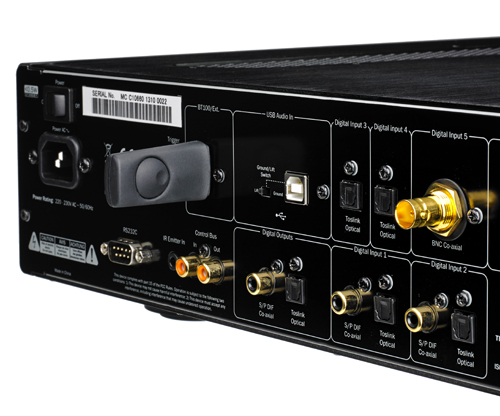
There’s a range of digital filters, and choice will come down to system or your taste.
In our reference set-up – Naim NDS/555ps streamer, MacBook (with Pure Music media-playing software), Bryston BP26/4BSST2 amplifier and ATC SCM50 speakers – we prefer the ‘Minimum’ phase option, which sounds organic in our set-up.
Change to something like a 24-bit/96kHz recording of Snowflake by Kate Bush, however, and a few cracks show in the 851D’s performance.
There’s insight, agility and body, but the DAC is less successful communicating the nuances of the piano or the emotion in Bush’s vocals.
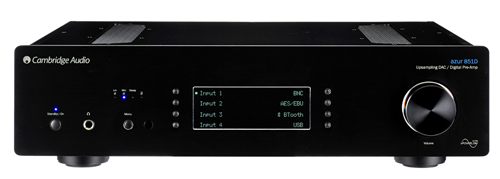
Compared with Chord’s QuteHD or Naim’s pricier DAC-V1, there’s less dynamic expression at low levels and less security.
Pairing via Bluetooth is easy and, while the sound isn’t up to the usual hi-fi inputs, it’s a welcome option.
We also like the DAC’s performance through the headphone output. Such outputs are often compromised, but not here – using Grado SR325is we find the same insight and transparency as with the analogue outputs.
Verdict
The Azur 851D is a fine DAC. It may not match the best in outright entertainment but it still sounds good and combines talent with a useful range of features.
Add fine build into the mix and you have a worthy product.
MORE: See all our DAC reviews
What Hi-Fi?, founded in 1976, is the world's leading independent guide to buying and owning hi-fi and home entertainment products. Our comprehensive tests help you buy the very best for your money, with our advice sections giving you step-by-step information on how to get even more from your music and movies. Everything is tested by our dedicated team of in-house reviewers in our custom-built test rooms in London, Reading and Bath. Our coveted five-star rating and Awards are recognised all over the world as the ultimate seal of approval, so you can buy with absolute confidence.
